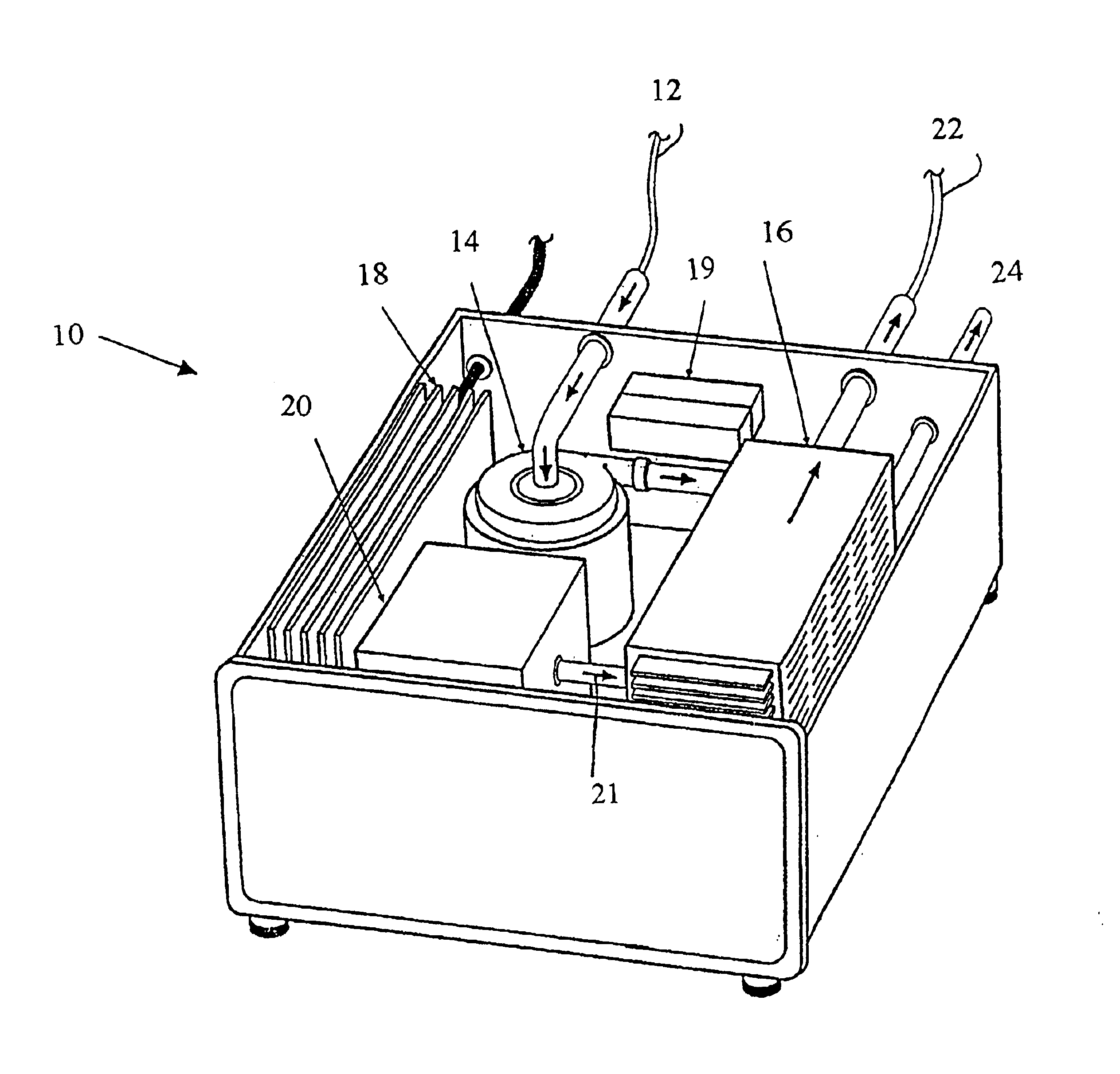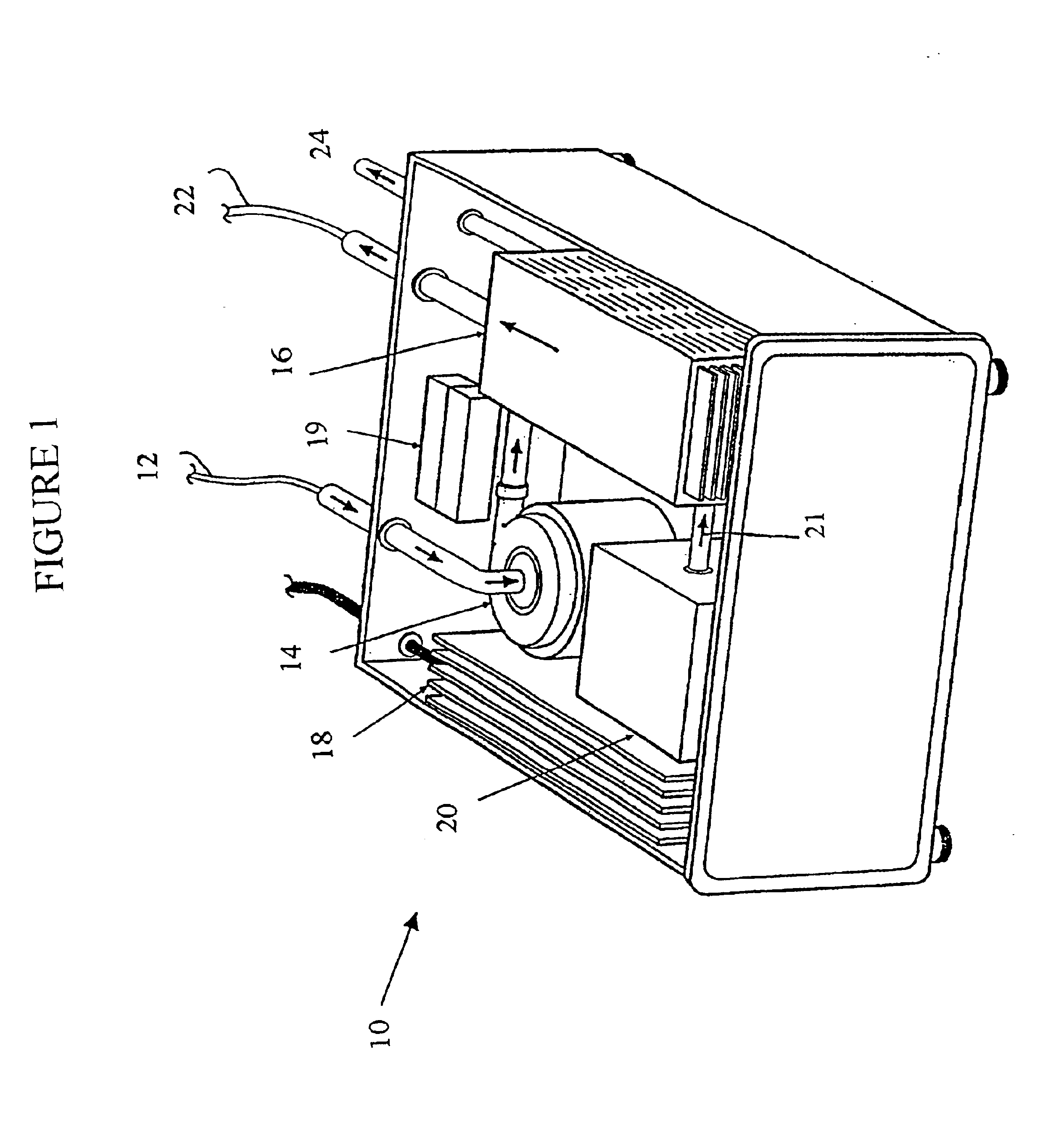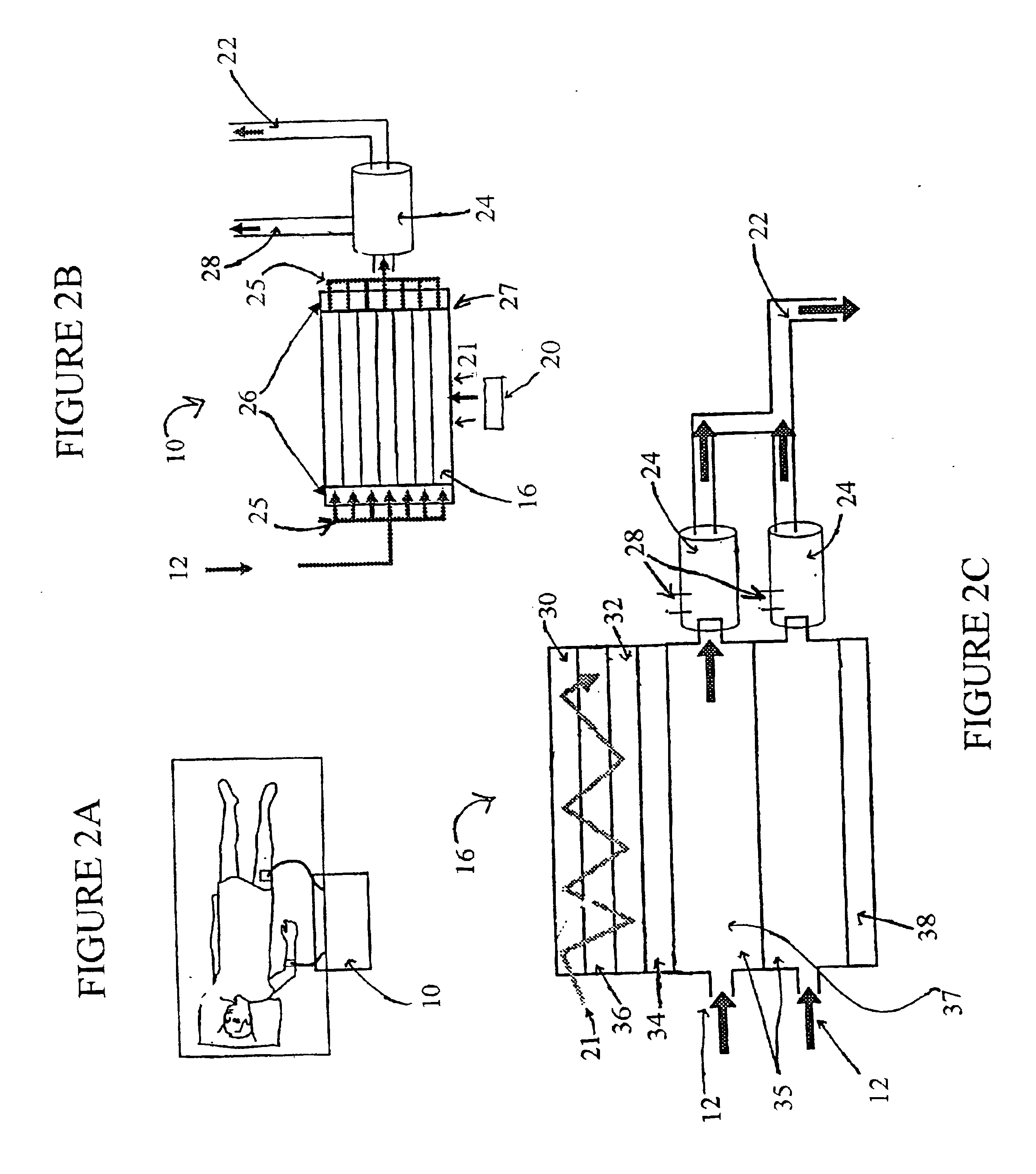Photolytic artificial lung
a technology of artificial lung and photolysis, which is applied in the direction of prosthesis, other blood circulation devices, and separation processes, etc., can solve the problems of insufficient knowledge of pulmonary pathophysiology, lack of new innovative respiratory assist therapy for patients with severe, life-threatening lung disease, and lack of emerging therapies
- Summary
- Abstract
- Description
- Claims
- Application Information
AI Technical Summary
Benefits of technology
Problems solved by technology
Method used
Image
Examples
examples
Having generally described the invention, the following examples are included for purposes of illustration so that the invention may be more readily understood and are in no way intended to limit the scope of the invention unless otherwise specifically indicated.
A prototype photolytic artificial lung was produced in order to demonstrate the ability of the device and accompanying processes to re-oxygenate synthetic blood serum (Locke's Ringer Solution), with concomitant CO2 removal and pH control, using thin film constructs. In this regard, a photolytic test flow cell (see FIG. 3) was constructed using exemplar materials for the elements of the photolytic artificial lung—a conductive coating of vacuum deposited Ti metal, a coating of adherent TiO2 (anatase), a MnO2 particulate layer, and then a bicarbonate solution. A U.V. laser light was introduced to the transparent glass or quartz substrate. This cell was used to collect pH and cell electrical current data as a function of laser U...
PUM
 Login to View More
Login to View More Abstract
Description
Claims
Application Information
 Login to View More
Login to View More - R&D
- Intellectual Property
- Life Sciences
- Materials
- Tech Scout
- Unparalleled Data Quality
- Higher Quality Content
- 60% Fewer Hallucinations
Browse by: Latest US Patents, China's latest patents, Technical Efficacy Thesaurus, Application Domain, Technology Topic, Popular Technical Reports.
© 2025 PatSnap. All rights reserved.Legal|Privacy policy|Modern Slavery Act Transparency Statement|Sitemap|About US| Contact US: help@patsnap.com



